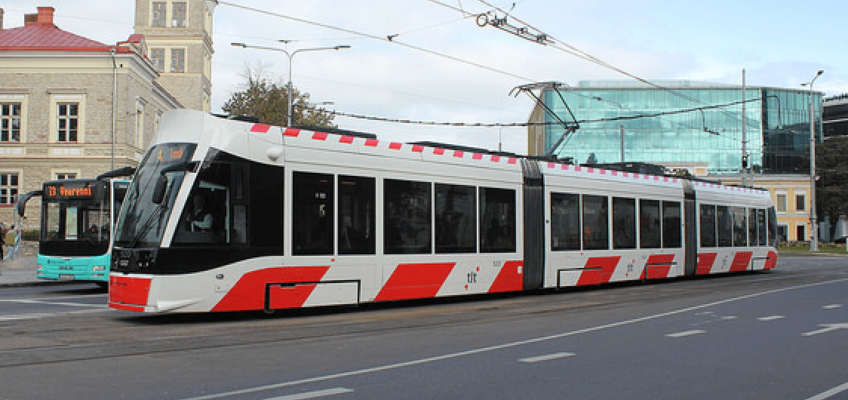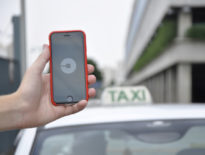Free public transport may be an idea whose time has come — at least in Europe — one country at a time.
In January 2013, after a referendum approved by 75 percent of the voters, the city of Tallinn, population 420,000, capital of Estonia and birthplace of Skype and other technological innovations became the largest city in Europe to introduce citywide free transit on buses, trams, trolley buses and trains.
Free transit was reserved for Tallinn residents. Tourists and non-Tallinn residents still had to pay a little over $2 a ride.
Tallinn was able to tap into an unusual revenue source to make up for the loss of the 30 percent of transit costs covered by ticket sales: Unregistered residents who live in Tallinn but pay taxes to another town where they had previously lived. There were 40,000 such unregistered residents living in Tallinn in 2012, Sulev Vedler reports in CityLab.
Free transit proved a powerful inducement for them to register in Tallinn, which then receives about $1200 per person as its share of federal income tax revenue. More than 10,000 people registered as Tallinn residents in 2013, nearly three times more than registered in 2012. The new annual revenues were almost as much as the lost fare box revenue.
Five years later Allan Alaküla, head of Tallinn’s EU office summed up the current situation. “So the city budget has gained, service quality has improved constantly and in the surroundings of Tallinn, the demand for public transport has increased…People in other parts of Estonia started to demand free public transport, too,” he told HuffPost.
National leaders responded. On July 1st all Estonians will be able to ride county buses free anywhere in the country. Train rides will not be free, although tickets on the state-owned rail network will be cheaper. And in Estonian cities outside of Tallinn, all passengers will still have to pay to use all modes of public transit. The Estonian government has committed an additional $15 million not only to eliminate bus fares but to increase the quality and frequency of bus service in rural areas.
———–
In 2011, Dunkirk, located on the northern coast of France, raised by half a percent a tax on regional businesses to pay for the then-mayor’s pet economic development initiative: Doubling the capacity of a local sports arena at a cost of more than $300 million.
Which prompted Patrick Vergriete to run for Mayor in 2014 on a promise to use that money to make transport free for the 200,000 people on Dunkirk’s network.
In 2015, Mayor Vergriete launched free weekend service. Saturday ridership increased by 30 percent; Sunday ridership by some 80 percent.
In September 2018, Dunkirk will become the largest city in France to offer free transportation.
——–
In 2015 and 2016 Germans were shocked to discover that VW, their largest car manufacturer had been dramatically understating the level of toxic tailpipe emissions. At the same time, the European Union, which estimated that this life-threatening pollution affects 130 European cities and causes about 400,000 early deaths, was finalizing a directive that will force cities to reduce these emissions or pay heavy fines.
In February, in a letter to the EU environment commissioner three German ministers wrote, “We are considering public transport free of charge in order to reduce the number of private cars.” The proposal will be tested by “the end of this year at the latest” in five cities across western Germany, including former capital Bonn and industrial cities Essen and Mannheim.
———
In the last few decades American cities experimented with free public transport, These experiments proved short lived. Except in Chapel Hills.
In 2002, Chapel Hill Transit, which serves both Chapel Hill and Carrboro with a combined population of 90,000, went fare free.
At the time, most of Chapel Hill Transit’s revenue was coming from the University of North Carolina’s paying for transit for its employees and students. The university agreed to pay a little more and Chapel Hill and Carrboro kicked in the rest to cover the 20 percent of the transit costs not paid by tickets.
“We look at it as a pre-paid fare program,” Brian Litchfield, interim director of Chapel Hill Transit, which serves both cities, told Eric Jaffe of CityLab in 2013. “The university is pre-paying for all their employees and students to ride. The town of Chapel Hill and Carrboro are pre-paying their fares via property tax and vehicle registration fee. So while there’s not a fare to get on the bus, it’s definitely not a free system.”
The program has been phenomenally successful. Ridership increased from around 3 million passengers a year in 2002, to about 7 million in 2013.
Sign-up for our From the Desk of David Morris Newsletter and follow ILSR on Twitter and Facebook.





